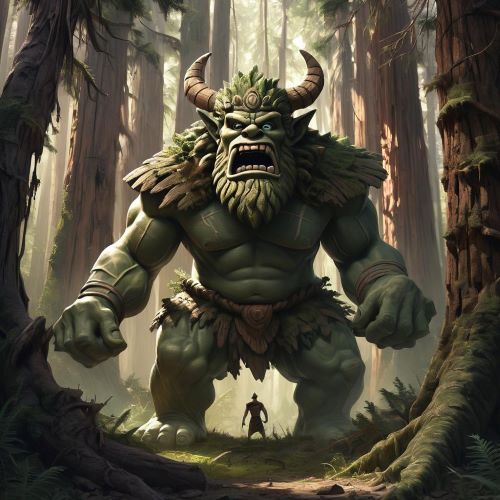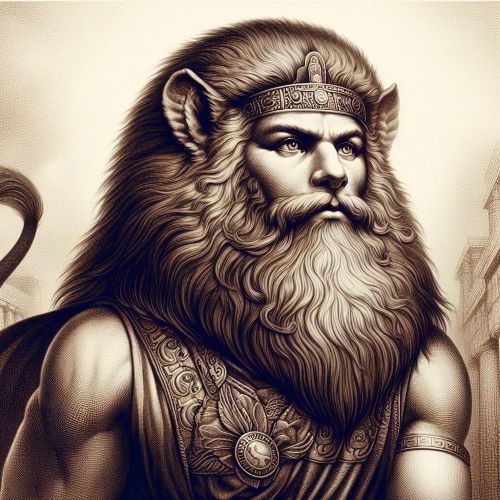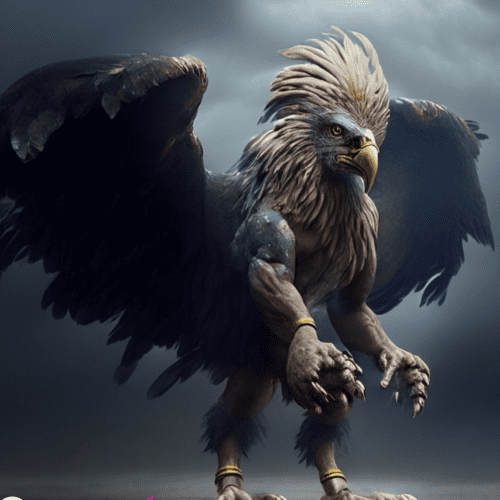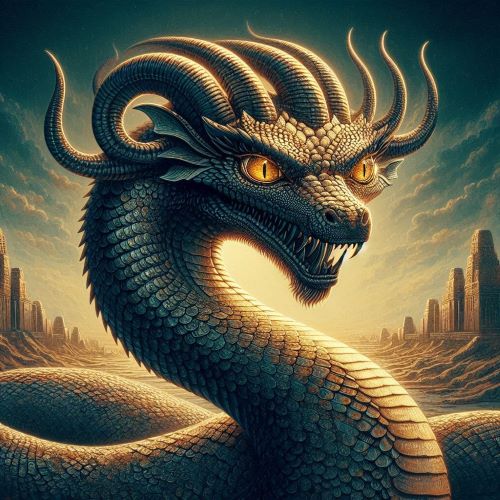Mesopotamian Hybrids
Mesopotamian Hybrids stand among the most extraordinary creations of ancient mythology, blending the forms of humans, animals, and divine beings into powerful symbols of protection, chaos, and cosmic balance. Emerging from one of the world’s oldest civilizations, these hybrid creatures reflected the Mesopotamian belief that the boundaries between the mortal and divine were fluid. Each hybrid represented the unity of natural and supernatural forces, embodying divine strength and the complexity of existence. Whether carved into temple walls, guarding palace gates, or appearing in mythic tales, these beings were both protectors and reminders of the gods’ authority over all realms.
One of the most recognizable Mesopotamian Hybrids is the Lamassu, a majestic guardian figure with the body of a bull or lion, the wings of an eagle, and the head of a human. Found at the entrances of Assyrian palaces, the Lamassu symbolized strength, wisdom, and vigilance, warding off evil and ensuring divine protection for the king and his people. Similarly, the Apkallu—semi-divine sages often depicted with bird heads and human bodies—served as teachers of civilization, sent by the god Enki (Ea) to impart knowledge, laws, and rituals to humanity. Their presence reflected the Mesopotamian belief that divine wisdom was delivered to mortals through beings that transcended natural form, blending the rational mind of humans with the instinct and power of animals.
Other Mesopotamian Hybrids, such as the Mushussu (or “furious serpent”) associated with the Babylonian god Marduk, combined reptilian and feline traits to symbolize control over chaos. This dragon-like creature appeared on the Ishtar Gate of Babylon, representing royal authority and divine mastery over disorder. The scorpion men, known as aqrabuamelu, guarded the boundaries between the human world and the divine realm. With human torsos and scorpion tails, they embodied vigilance and protection, often appearing in myths as gatekeepers to sacred or forbidden places. Each of these hybrids carried not only aesthetic power but deep theological meaning—embodying the balance between creation and destruction, order and chaos.
These Mesopotamian Hybrids also had practical and spiritual roles in ancient life. Their images appeared on protective amulets, cylinder seals, and architectural carvings meant to guard against demons and misfortune. The combination of animal strength and divine intelligence made them ideal symbols of supernatural defense. Temples and ziggurats were adorned with these figures to create a sacred space that was both inviting to the gods and hostile to evil. Through them, the Mesopotamians expressed their understanding of the universe as a delicate structure held together by divine guardianship and moral order.
Today, Mesopotamian Hybrids continue to inspire fascination in art, archaeology, and popular culture. They have influenced depictions of mythical beasts in later civilizations, from the sphinxes of Egypt to the chimeras of Greece. Modern fantasy literature and video games often draw upon their forms, reviving the ancient blend of beauty and terror that once protected the temples of Babylon and Assyria. Beyond their visual grandeur, these hybrids remind us of humanity’s enduring attempt to make sense of the forces that shape existence—fusing the mortal with the divine, the known with the mysterious. In their composite bodies, the Mesopotamians captured the essence of creation itself: a world where every being, natural or supernatural, was a reflection of divine imagination.
Mesopotamian Hybrids stand among the most extraordinary creations of ancient mythology, blending the forms of humans, animals, and divine beings into powerful symbols of protection, chaos, and cosmic balance. Emerging from one of the world’s oldest civilizations, these hybrid creatures reflected the Mesopotamian belief that the boundaries between the mortal and divine were fluid. Each hybrid represented the unity of natural and supernatural forces, embodying divine strength and the complexity of existence. Whether carved into temple walls, guarding palace gates, or appearing in mythic tales, these beings were both protectors and reminders of the gods’ authority over all realms.
One of the most recognizable Mesopotamian Hybrids is the Lamassu, a majestic guardian figure with the body of a bull or lion, the wings of an eagle, and the head of a human. Found at the entrances of Assyrian palaces, the Lamassu symbolized strength, wisdom, and vigilance, warding off evil and ensuring divine protection for the king and his people. Similarly, the Apkallu—semi-divine sages often depicted with bird heads and human bodies—served as teachers of civilization, sent by the god Enki (Ea) to impart knowledge, laws, and rituals to humanity. Their presence reflected the Mesopotamian belief that divine wisdom was delivered to mortals through beings that transcended natural form, blending the rational mind of humans with the instinct and power of animals.
Other Mesopotamian Hybrids, such as the Mushussu (or “furious serpent”) associated with the Babylonian god Marduk, combined reptilian and feline traits to symbolize control over chaos. This dragon-like creature appeared on the Ishtar Gate of Babylon, representing royal authority and divine mastery over disorder. The scorpion men, known as aqrabuamelu, guarded the boundaries between the human world and the divine realm. With human torsos and scorpion tails, they embodied vigilance and protection, often appearing in myths as gatekeepers to sacred or forbidden places. Each of these hybrids carried not only aesthetic power but deep theological meaning—embodying the balance between creation and destruction, order and chaos.
These Mesopotamian Hybrids also had practical and spiritual roles in ancient life. Their images appeared on protective amulets, cylinder seals, and architectural carvings meant to guard against demons and misfortune. The combination of animal strength and divine intelligence made them ideal symbols of supernatural defense. Temples and ziggurats were adorned with these figures to create a sacred space that was both inviting to the gods and hostile to evil. Through them, the Mesopotamians expressed their understanding of the universe as a delicate structure held together by divine guardianship and moral order.
Today, Mesopotamian Hybrids continue to inspire fascination in art, archaeology, and popular culture. They have influenced depictions of mythical beasts in later civilizations, from the sphinxes of Egypt to the chimeras of Greece. Modern fantasy literature and video games often draw upon their forms, reviving the ancient blend of beauty and terror that once protected the temples of Babylon and Assyria. Beyond their visual grandeur, these hybrids remind us of humanity’s enduring attempt to make sense of the forces that shape existence—fusing the mortal with the divine, the known with the mysterious. In their composite bodies, the Mesopotamians captured the essence of creation itself: a world where every being, natural or supernatural, was a reflection of divine imagination.





